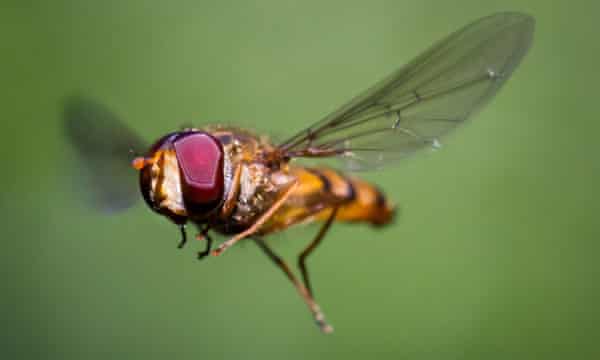Country diary: half crazy for the love of Mexican daisies
Allendale, Northumberland: In the narrow microclimates of a paved terrace, they can survive our hard winters

After several days of North Pennines mist, the sky has cleared. Now, with the evening sun, the Mexican daisies by my front door are bustling with insects. A fly assiduously cleans its legs on a yellow-cushioned flower centre, a black beetle crawls around the Fibonacci spirals of another. A buff-tailed bumblebee stops for a feed, the thin-stemmed daisy bending beneath its weight, then moves on to the easier rewards of lamb’s ears.
It was on a trip to Brittany many years ago that I first saw Mexican daisies, Erigeron karvinskianus. They tumbled over walls and down steps, exuberant and joyful. Moving to Allendale 10 years ago, I brushed seeds from my last garden into the gaps of a paved terrace. In these narrow microclimates they survive our hard winters and even an annual autumn cutback using a lawnmower.
It is their paintbox of colours that makes these frothy daisies so endearing. They begin white before blushing sugar pink, then darken to deep pink with age. Bobbing in the slightest breeze, they are made up of ray florets to attract insects while, in their centres, each fertile yellow disc floret produces seed if fertilised. I look at them through closeup binoculars that reveal details I might otherwise have missed. A cluster of seeds with needle-fine parachutes caught in a spider web. Fallen petals and wet seeds, their silks closed like miniature paintbrushes.

Sitting on a bench, I watch a marmalade hoverfly, Episyrphus balteatus, orange and black banded, as it dabs its short tongue into individual florets. The most movement though comes from the numerous thick-legged hoverflies, Syritta pipiens, that dart about, wings gleaming brassily as the low sun catches them. It’s their bodybuilder’s thighs, their enlarged hind femora, that make them easy to recognise. Males are territorial and spar over the flowers, the winner being the one that forces the other backwards.
The larvae of hoverflies feed on decaying organic matter. With our trio of compost heaps, ample mulches and mass of flowers, the garden has everything needed for these nimble flyers to thrive – places to breed and places to feed.